2009 Volvo XC90 Review
Volvo’s XC90 is perhaps somewhat of an enigma. When it first skidded out onto the street in 2002, it represented a new market segment for the Swedish automaker. Bigger and heavier than any Volvo before, it was designed specifically for North American buyers, yet incorporated a good deal of Scandinavian sensibilities.
FAST FACTS
| 1. All XC90s are built at Torslanda in Sweden. |
| 2. The XC90 is offered with a 235hp 3.2L inline-six and a 311hp 4.4-liter V8. |
| 3. AWD is available only on V8 models. |
| 4. The XC90 was voted North American Truck of the year in 2003. |
| 5. Cargo room is an immense 88.8 cubic feet. |
As initially launched, the XC90 was offered exclusively with turbocharged engines – a five-banger as the base engine, and an inline-six as the step up. A 4.4-liter V-8 joined them for 2005. All were teamed with automatic transaxles, the turbo motors with a five-speed and GM four-speed respectively, the V8 with a six-speed unit. For 2007 the turbo engines were dropped and the styling of the XC90 updated. The new base engine became a 3.2-liter normally aspirated inline-six with 235hp, while the V8 continues as the top power option. Both are coupled with a six-speed automatic transaxle. U.S. models are offered in either front drive configuration (3.2) or AWD (V8 only).
SOLID STANDARD
Mercedes-Benz used to state that their vehicles were “engineered like no other car” and perhaps to a certain extent the same is true about Volvos. While there are other SUVs that dwarf the XC90 in stature, there are few that actually feel as substantial. The panels on this one are made from good thick steel. Touch any aspect of this truck and you’d think it could rip through one side of a house and out the other with minimal damage (it likely can, but we’re not going to put it to the test).
The front fascia has been uniquely designed to reduce the risk of injury should a pedestrian come into contact, by deflecting them above the hood rather than pushing them underneath. Along with a five-star rating from the Insurance Institute for Highway Safety (IIHS), Volvo’s patented Side Impact and Whiplash Protection Systems, plus a reinforced roof, the XC90 remains one of the safest vehicles in its class – even after all these years – a testament to a sound basic design.
Inside, we find a well-trimmed cabin, even on the base 3.2. A low cowl height and fairly large greenhouse (by modern standards), results in excellent outward visibility. The dash and controls are well laid out, with everything in easy reach of the driver. Like the exterior, nearly every aspect of the cabin, from the seat cushions, to the center console, function stalks and HVAC controls have a solid, substantial feel that’s carried over to the nicely finished door panels and seats.
Passenger room is also excellent with plenty of space above and in front for both rows of seats, plus on all but the base model there’s a third set of jumpers for an extra pair of bodies. If there is one complaint, it concerns the head rests – the front one aren’t adjustable and maybe positioned a bit far forward for some tastes. The second row seats are excellent and can be moved independent of each other. In terms of cargo space, with second row seats folded flat, the base, 3.2 XC90 can swallow a whopping 88.8 cubic feet of gear (the stowable third row seating on the upper trim levels, gives up less than 2 cubic feet of space when folded flat).
MORE MUSCLE
One of the biggest criticisms of the early XC90; was that the turbo charged five-cylinder engines, weren’t really up to hauling its considerable 4,500 lb mass around. On anything other than flat highway conditions, the truck felt rather tough going and the five-speed automatic didn’t exactly do wonders for fuel economy, especially the AWD version. With the 2007 freshening, Volvo instigated a number of improvements and these become evident out on the open road. The base 3.2-liter in-line six, with 235 horsepower and 236 ft-lbs of torque is much stronger, with better throttle response, particular on inclines and when passing. Fuel economy is also much better. On the highway 20-21 miles per gallon is easily possible and around town it doesn’t drop too much – expect around 14-15 under normal conditions.
The V8-powered XC90 is quite a different animal. The engine may be relatively small in displacement compared to some other V8s powering current SUVs, but boy does it go. The Ford/Yamaha based dual overhead cam motor delivers 311-hp and satisfying wallop of torque – 325 ft-lbs. It’s well matched to the six-speed slushbox, particularly in 3rd, 4th and 5th gears. Overtaking is effortless and if you plan on towing, we’d suggest opting for this engine.
Fuel economy practically rivals the six with 14 mpg in town and around 19-20 on the highway, plus thanks to its tubular dual exhaust system; the sound resonating once you step on the throttle is just fantastic.
NUMB STEERING, LOTS OF BODY ROLL
In terms of ride quality, the big Volvo is actually rather cushy. It soaks up crater lined streets and freeway expansion joints extremely well, but it isn’t so soft to feel like you’re riding on a waterbed. Wind noise is also very minimal and from behind the wheel, there’s no question that you feel safe and secure in this vehicle.
Much has been made about the handling of car based sport utilities like this and while the XC90 isn’t likely to win any awards on the slalom or skidpad, it does well enough in view of its size and weight.
Generally speaking, the tires respond enthusiastically, assisted by the standard Roll Stability control and the Haldex AWD system on V8 models. The steering is, however, numb, reeling more like it belongs on a ’76 Cadillac De Ville than in a crossover utility with semi sporting pretensions. Braking is another area where the XC90 could use some improvement, as the heft SUV feels its weight. There’s quite a bit of front-end dive as the anchors do their thing, making the DSTC anti-skid system and four-wheel ABS with braking assist welcome additions.
THE VERDICT
As briefly mentioned above, Volvo Cars North America currently markets the XC90 in four trim levels in the U.S. The entry level is the 3.2, with a MSRP of $37,000. Upgrading to the R-Design package adds another $1,250 to the sticker price; while the all-wheel drive V8 begins at $46,300, the R-Design package version going for $47,550 before options and taxes. That’s quite a difference in price, but given the level of performance and improved grip offered by the V8, we think it’s almost worth the extra, especially if you’re planning on using your XC90 as true family hauler/vacation machine.
It might be getting on in years but in our opinion the XC90, helped in part by great build quality, outstanding safety features and sound ergonomics, still compares favorably against some of the Johnny come latelys. Plus, being a Volvo, used residuals are likely to remain stronger than most rival crossover-utilities against which it currently competes.
LOVE IT
- Solid build quality
- Incredibly safe
- Strong V8 performance
LEAVE IT
- Numb steering
- Underpowered six-cylinder
- Lots of front-end dive under braking
More by Huw Evans

















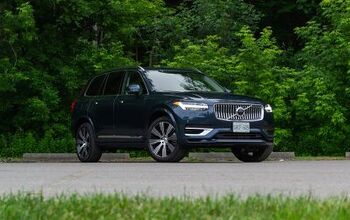
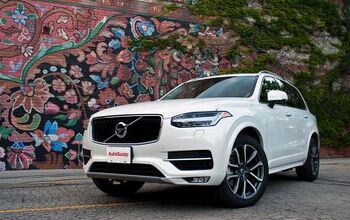



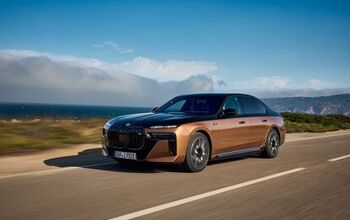

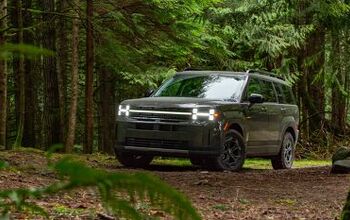
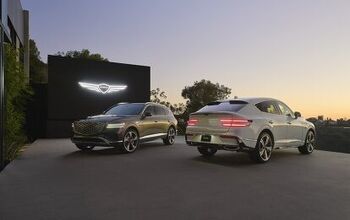





Comments
Join the conversation